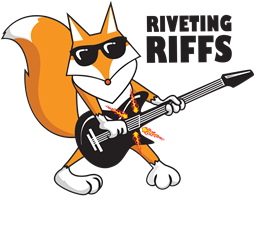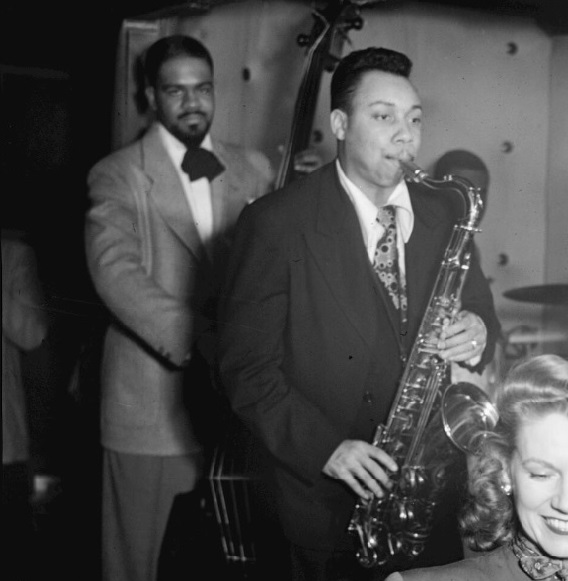

 |
Interview with Author Benjamin
Franklin V |
|
Recently, The University of South Carolina Press published a book
authored by Benjamin Franklin V titled An Encyclopedia Of South Carolina
Jazz & Blues Musicians and it would make a great addition as a required
or recommended supplementary text book for many music courses. The use
of the word musician may cause our readers to immediately jump to the
conclusion that this book only concerns those who play an instrument and
that is not true. The term musician is used in the broader sense here to
also include singers and some who composed music.
The author also took time during a recent conversation with Riveting
Riffs Magazine to talk about the music that is covered in this very well
presented book, “The South Carolina contribution to Jazz and Blues has
been rich. I am dazzled by many of the musicians who came out of this
small state.
There will be Soul singers like Nick Ashford, of the group from the
seventies Ashford & Simpson. Nick Ashford is from South Carolina and
there is a really nice picture of him in there. I don’t think many
people would consider them to be Blues and definitely not Jazz, but
since I brought Soul into the definition of Blues somebody like Nick
Ashford is in there.
There is another name you will recognize and that I Eartha Kitt who was
known primarily as an actress and a Cabaret singer or something like
that, but she began her career with Jazz musicians. She concluded her
career performing at Jazz festivals and on that basis I include her as a
Blues or Jazzy singer and not so much as a popular singer even though
that is probably how most people think of her.”
Just how far back in time did Benjamin Franklin V go when researching
the artists including in this book?
“I think the musician who was born the earliest was a guy named Frank
Martin (played in a string band) who was born a slave (sometime between
1847 and 1860 in Spartanburg County). I deal a lot with vaudeville and
medicine shows and things like that dating back into the nineteenth
century. Even though these people never recorded they are part of the
musical tradition that led to Jazz and Blues. There are a lot of people
(in the book) that are from the nineteenth century.
I talk in detail in the introduction about a guy named Arthur Prysock
who was a singer (born in 1924).
What I found, maybe beginning ten years ago is when writers, write
biographically about musicians they go to the web and they check on
Wikipedia and find an entry about that person and they use that
birthdate and death dates as the ones in their own articles about those
musicians. (However), in my research for this book I found often, not
the majority of cases by any means, but often when I went back to the
census; to passport applications to draft card information and all of
that the preponderance of evidence indicated that these published dates
were incorrect. I am most
proud in this book of getting these dates, as right as is humanly
possible given the documentation that exists.”
The journey to craft this encyclopedia has been a long one.
“Before teaching here at the University of South Carolina I taught at
the University of Michigan in Ann Arbor.
I had been a Jazz fan and to a lesser degree (a fan of) Blues.
My adolescence was in the 1950s and I cultivated that taste and I
bought record after record from the cheapie bins in the record stores.
As time passed I grew increasingly knowledgeable about the music and I
became increasingly more interested in it.
When my family and I moved from Ann Arbor to Columbia, South Carolina
one of the first questions that I asked within the musical context was
what Jazz or Blues musicians do I know that are for sure from South
Carolina? I just wanted to
know. My answer was one name and that was Dizzy Gillespie.
It must have been 1985 that I began to seriously ponder that question
and I figured if I didn’t know very many things about these musicians
then there weren’t very many other people who knew either.
I decided I would identify as many of them as possible.
As I got up to 100 or 150 I decided well look there are enough names
here that are significant that perhaps if I could get to these people
and interview some of them for the record, which I did. I further
thought if these things are of interest to me, surely they would be to
other people. I pitched a proposal to The University of South Carolina
Press to publish a bunch of these interviews in book form and they did,”
he recalls.
He pauses and
poses a question to this writer, “Do you know the name Jaboo Smith for
example who back in the thirties and late twenties was the only real
rival to Louis Armstrong? He is South Carolinian. The discovery was just
amazing, a legendary figure like that that no one even knew existed, let
alone having come from South Carolina.
After (the book of interviews) was published I thought wait a minute
there is more to be done here. If I can find enough maybe I can turn
that into an encyclopedia.”
There were many others that Benjamin Franklin V discovered for the first
time.
“I would say that other than Dizzy Gillespie all of them who had any
reputation at all I was dazzled by, because I think of myself as
relatively well informed. As I said, if I do not know about these people
I can’t imagine that many people in South Carolina do.
I discovered this Jabbo Smith, who is a legendary figure and he
disappeared for about fifty years after he made his flash in about 1929.
Everybody thought he was dead. When I discovered not only is he a South
Carolinian, but he was still alive and living in New York City I got up
to New York City as quickly as I could.
I was (amazed) to learn that he was alive and that he would consent
to see me. He is kind of in the pantheon of mythological Jazz musicians,
but he is real. He had a couple of strokes and he really couldn’t speak
very well, so I needed someone with me to help me understand what he
said.
He was so nice and a few weeks after I was with him in New
York he sent me best wishes on a cassette tape, which I thought was a
beautiful gesture.
All of them who had any reputation at all dazzled me by their very
existence, because I wanted to know who these people were and I found
out. It was just terrific.
Another one was Tommy Benford, a drummer who played at the same time
that Jabbo Smith played with Jelly Roll Morton. Tommy Benford was from
Charleston. These old timers like Jabbo Smith and Tommy Benford could
not have been more accommodating and could not have been nicer. They
were just lovely, lovely human beings, which makes it doubly nice. I
will say that about most of the people that I encountered.
There is one entry in that book and I think it is for Hezekiah Jenkins
of which I make much of Maria Muldaur. He wrote a tune called “The Panic
Is On,” about the great depression and Maria Muldaur discovered that and
said that Ken Burns the filmmaker could do a three hour special on the
great depression and could not do as thorough of a job as Jenkins did in
this tune “The Panic Is On.”
One of the amazing stories that we haven’t mentioned is the Jenkins
Orphanage Band. There was a Reverend Daniel Jenkins in Charleston in the
1890s and he saw on the streets these waifs, these (African American)
children running around on the streets wild and their prospects in life
were about zero. He and his wife Lena decided to do something to take
action and they established this orphanage in Charleston in the 1890s.
It came to be known as the Jenkins Orphanage. He and the staff taught
the children all of these trades like printing for example and they
generated money by having music as a major part of the curriculum and
forming bands with not all, but with most of the children who would play
on the street corners for handouts.
I tried to identify as many of these musicians as possible and in the
book there are probably 150 of them. Most had nothing to do with music
after performing there, but some of them did. Jabbo Smith was a ward (of
the orphanage). There was a guy named Cat Anderson who was famous for
playing with Duke Ellington. Tom Delaney a composer of note was out of
there.
Within the musical context Daniel and Lena did a phenomenal job of
taking these children out of dire straits, giving them a trade and
giving them a skill with music that permitted them to go out into life
and make a living, while contributing significantly to the betterment of
society. That is a story that really needs to be told. A lot of people
in South Carolina don’t even know of the Jenkins Orphanage.
I also met the son of a singer named Madeline Greene. I had never heard
of Madeline Greene. She was a singer for Earl Hines one of the major
Jazz pianists and bandleaders. Everyone knows a singer who was with Earl
Hines, named Sarah Vaughan, but nobody knows Sarah Vaughan’s predecessor
in the band, which was Madeline Greene from South Carolina. I was
desperate for information about her and it did not exist or very little
of it existed on the web. One way or the other I found my way to her son
out in California and he was able to provide important information. Not
only that but I reached his son, Madeline Greene’s grandson who added
information to that his father had, but also offered something else, a
picture of Earl Hines and Madeline Greene for me to use in the book. If
you turn to that entry in the book about Madeline Greene you will see
this good looking woman Madeline Greene with the great Earl Hines.”
The front and back covers of An
Encylopedia Of South Carolina Jazz & Blues Musicians are very
striking. The cover has a velvety feel to it and adorning the front
cover is a great photo of guitarist Wes Mackey who was born in South
Carolina, but spent the majority of his life and career in Canada, via
stops in Hong Kong and Malaysia. On the back cover you will find high
quality vintage photos of Dizzy Gillespie, Herman Bradley and Pearl
Woods.
While the effort that went into this book is quite exhaustive some
readers may question the omission of a few musicians from South
Carolina. The explanation is simple, although perhaps frustrating. There
were some that when contacted by the author simply did not want to be
included in this book and there was another who demanded payment if that
individual was to be included in the book.
The book is not only a treasure trove of information, but it is a “must
have” for amateur and professional musicologists everywhere.
If you turn to pages 283 and 284 you will even find a reference to the
Riveting Riffs Magazine interview with Maurice Williams, the singer and
songwriter from South Carolina who among other things wrote and first
recorded such iconic songs as, “Stay,” and “Little Darlin’.”
|